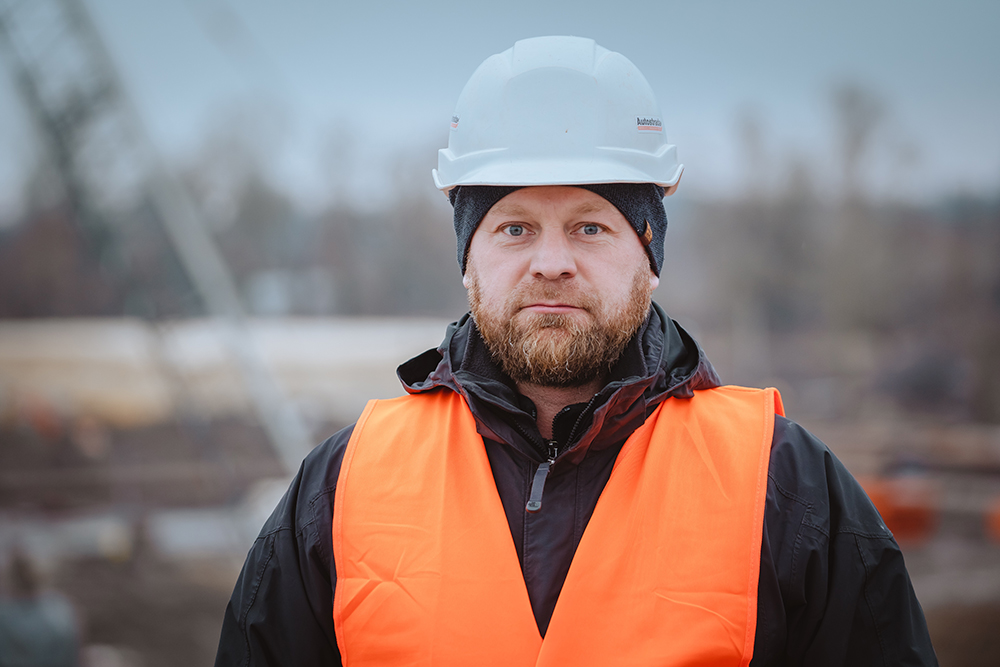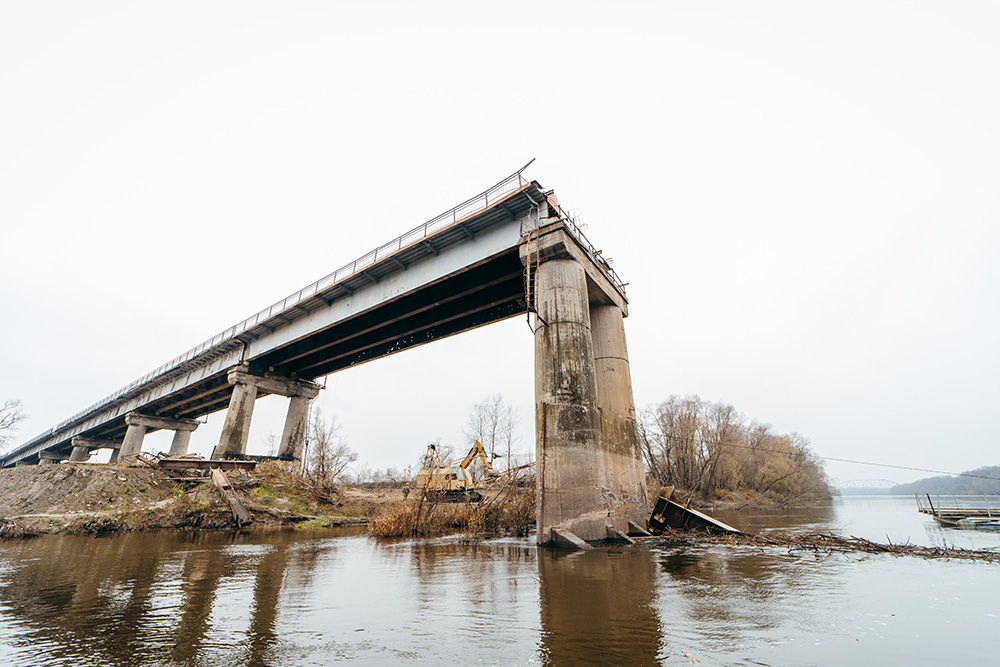
Before Russia’s invasion more than a year ago, Ukraine’s transportation sector was evolving. A desire to forge closer ties with Europe helped Ukraine implement more technology into its transportation systems and embrace ambitious development projects.
Today, much of that work has been lost, and government agencies are fighting to simply keep the system operational. However, despite all that has occurred since February 2022, Ukrainian infrastructure has proven itself to be resilient.
Even before the war, there were major problems. In 2019, the World Economic Forum Transportation Quality Index ranked the nation at 119 out of 141 countries. Ukravtodor, the Ukrainian State Agency of Automobile Roads, calculated that in 2016-2017, poor road infrastructure resulted in estimated Ukrainian economic losses of 100-120 billion Ukrainian Hryvnias ($2.7 - 3.3bn). In 2016, Mykola Berezovsky, then head of Ukravtodor, stated that out of the 170,000 km road network, about 97% of the roads were in a terrible state.

Ukrainians have never been naive to the state of their transportation system, and the past few decades have seen government authorities make various attempts at reform. One of the most notable efforts to improve infrastructure came in 2012 when Ukraine and Poland were selected to host the Uefa European Football Championship.
The soccer tournament was meant to help showcase a new, more modern Ukraine that was beginning to take its place on the world stage.
Ukraine invested heavily in improving its airport capacity, urban infrastructure and even developed modern public transportation systems in the form of new electric trains. Overall, infrastructure spending on Euro 2012 totalled 107 billion Hryvnias ($2.9bn). (Spain beat Italy 4-0 in Kyiv’s Olympic Stadium, in a very different time).
Momentum continued when president Volodymyr Zelensky was elected in 2019: infrastructure development and modernisation efforts accelerated. A new initiative, dubbed The Large Construction Program, developed almost 14,000 km of roads and rebuilt 600 bridges in two years. In addition to physical infrastructure improvements, technological upgrades were implemented, including the capital Kyiv installing a new camera-based traffic speed enforcement system.
Russia’s 2022 invasion
Many look forward to implementing new modernisation programmes and integrating more technology into Ukraine’s transportation infrastructure.
To support these efforts, the Ukrainian government is undertaking an assessment of their future needs and laying the groundwork for incentivising outside investment by engaging in anticorruption initiatives.
Before the war, Ukraine had already begun making technology modernisation efforts. In 2020, the Zelensky government created the Ministry of Digital Transformation for the purpose of making Ukraine “a world champion in digital,” and prior to that, Ukraine had already implemented a digital government procurement system called ProZorro.
But for now, instead of mourning what has been lost, the men and women working in Ukrainian transportation are focused on defending their country.
Today, they hope every road they patch and bridge they repair will bring them closer to victory. Andriy Ivko, first deputy head of Ukravtodor, the state road agency of Ukraine, describes the scale of the task.
“We are confident that all the infrastructure will be restored, but it is important to say that the main resource [of Ukraine] is our people,” he says. “For instance, following the liberation of the northern part of our country, we focused on establishing humanitarian aid and rebuilding the necessary infrastructure for those living in those areas.”
Technology still plays a key role in infrastructure management for Ukraine, but the focus and function of these systems have drastically changed. Head of operational maintenance for the Kharkiv Region, Bogatyr Mykhailo Ivanovich, says that today, his agency lists communications technology for road crews as one of their most critical needs now that they are working in a wartime situation.
“Starlinks are basically the only thing in Ukraine that works [for communications], and when there are explosions, you must immediately contact teams. Now, because there are blackouts that interrupt cellular and internet service, we must rely on Starlinks for reliable communications with our workers in the field.”
Supporting the nation
In February 2022, during the first attempt by Russia to invade and when bombardment laid waste to much of Ukraine’s transportation infrastructure, the state and regional road agencies pivoted to a wartime footing by providing equipment and supplies to the military in support of the nation’s defence. In the early days of the invasion, road agencies even removed highway signs and changed road markings to confuse and stall the Russian invasion force.
Ironically, poor road conditions may have helped delay the progress of Russia's initial invasion and saved Kyiv from capture. Early reports showed that Russian units stalled along two-lane highways north of the capital. The Ukrainian road system was not capable of supporting armoured military units, and poor Russian logistics created numerous blockages and bottlenecks. When tanks sat exposed and idle on the roads, Ukrainian defence forces could launch counterattacks, target supply lines, and devastate entire units with little response.

Private sector companies have also played an important role in supporting the nation during this difficult time. Companies once engaged in modernisation before the war are now focused on repair and critical maintenance. Despite all that has occurred, many are still looking toward the day when the war ends so they can build a better system on top of the destroyed remains of what was lost.
Shumakher Yuriy, co-owner of Ukrainian infrastructure company RDS, says president Zelensky emphasised that Ukrainian roads should be ‘modern European’ ones. “Naturally, over the years, we have invested quite a lot in new equipment and modern technologies,” he explains. “Before the war, we developed our company to be more than a road company by paying a lot of attention to concrete technologies and developing our bridge division. All these pre-war developments came in handy after the invasion when many bridges were destroyed. Today, our investments and experience allow us to carry out any type of construction work necessary to support the nation, from road building to the construction of temporary accommodations for displaced people.”
He is confident that the building of roads and bridges will continue when the war is over “with renewed vigour”.
The road to recovery
It is impressive that so many can think about the future when the task right now is daunting. According to an estimate by the Kyiv School of Economics, the total damage done to Ukraine’s infrastructure due to Russia’s invasion was estimated at nearly $138 billion – a number that will certainly climb in the coming months. In autumn 2022, after mounting military failures and a successful Ukrainian counteroffensive, Russia changed tactics and began targeting civilian infrastructure nationwide. While experts agree that much of what has been targeted has little to no military value, the objective is obvious – to break the will of the Ukrainian people by disrupting the fundamental necessities of everyday life.
The past winter has been difficult but resolve has certainly been reinforced by the heroic work of Ukraine’s infrastructure workers, who have been critical to keeping life functional in Ukraine this winter as they fan out after every attack to immediately assess the damage and begin repairs.
Before the war, Alexander Kuruschak, a builder with Ukrainian construction company Autostrada worked many jobs, drilling wells and building infrastructure in countries across central and eastern Europe. There are stark differences between his job now versus what his work was like before Russia invaded.
“Before the full-scale invasion, there was a lot of bridge and road construction, and things were developing very quickly,” Kuruschak says. “After the invasion, most bridges were destroyed. The main goal right now is to recover what was destroyed. We have had some very bad encounters [since the start of the war]. Three of our workers died in Kharkiv because of mines. Of course, before we go and build something, everything is being explored but sometimes mines still explode. We are in danger every second because we are working in strategically important locations that Russia targets.”
Despite Ukraine’s resiliency and determination, the nation will need help to restore what it lost. In terms of international monetary support, many equate the challenge of rebuilding Ukraine to the Marshall Plan which followed the Second World War. Today, there are too many questions unanswered to know when a full recovery can start in Ukraine. Russian missiles still descend daily, and much of the east remains occupied. For the workers on the ground, no matter what happens, they will be ready to pick up the pieces and keep their nation moving.
Ukraine’s transportation: a brief history
The history of Ukraine’s transit and infrastructure system is closely tied to the past priorities of the Soviet Union. Throughout the Soviet years, investments in Ukrainian transportation reflected the nation’s role as a major producer of agricultural commodities and its position on the Black Sea, where important port and trade cities like Odessa and Sevastopol took centre stage. Ukraine was also a vital transport corridor for delivering Russian raw materials to Eastern Europe.
Authorities seldom prioritised investments in Ukrainian roads or civilian infrastructure when they weren’t deemed important to the Russian state. The focus on moving bulk commodities within the Russian sphere of influence also meant that economically important modernisations like the creation of advanced warehousing technologies or better border and customs processes were not developed. By the turn of the century, Ukrainian transportation infrastructure was crumbling, and the road system had a dubious reputation as being one of the most dangerous in Europe.
Ukraine’s rail network also faced its own challenges. Beyond a need for more investment and maintenance, Ukrainian lines inherited the Russian rail gauge standard of 1.520mm, which is incompatible with the European Standard of 1.435mm. This difference in rail gauges alone meant transit inefficiencies, increased transport times, and greater expenses for freight transport.
The Ukrainian government presented an ambitious strategy for modernising the nation’s freight and transportation infrastructure systems in 2017 – and many key projects were pursued the decade before Russia’s invasion in 2022. Among those completed was the Beskydy Tunnel between Ukraine and the European Union through the Carpathian Mountains which features a new two-lane railway.





